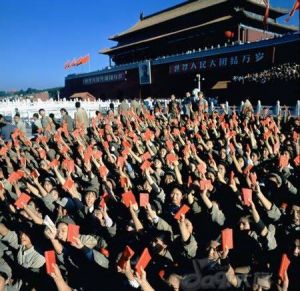The Politics of Numerology: Burma’s 969 vs. 786 and Malaysia’s 505
In SE Asia, some numbers are used for political and religious ends.
May 16, 2013
Numbers are important in explaining political issues and interpreting election results but they are rarely used to identify a person’s political affiliation, much less a person’s religion. In Southeast Asia, however, where numerology
has retained its appeal among the masses, numbers are increasingly being used by politicians and religious leaders in support of a particular cause, ideology, or candidacy.
In Burma, the use of numbers as religious symbols has led to some disastrous consequences. Since last year, the 969 symbol was adopted by some Buddhist monks and quickly became the symbol for a fringe pro-Buddhist movement, which
urges Buddhists to only shop at Buddhist-owned stores and avoid fraternizing – marrying, hiring or selling to – the nation’s Muslim minority. Unfortunately, the divisive movement sparked an intense anti-Muslim hate campaign that led in some cases to sectarian violence.
This is really tragic considering the “969” symbol was originally intended to promote peace. The numerological significance of the figure comes from the Buddhist tradition in which the Three Jewels (Tiratana) are made up of 24 attributes: nine special attributes of the Lord Buddha, six core Buddhist teachings, and the nine attributes of monkhood.
Its main proponent is the controversial Buddhist monk Ashin Wirathu (aka “Burmese bin Laden”), who has been accused of spreading anti-Muslim propaganda under the guise of protecting Buddhism.
Stickers, flags, CDs, and other paraphernalia bearing the 969 symbol are being sold throughout Burma. Further, consumers are urged to buy only at market stalls that have the 969 symbol. The aim is clearly to drive out Muslim vendors and traders who
are unfairly being blamed by many Buddhists for secretly aiming to dominate the local economy. Muslims compose about four percent of Burma’s population.
This extreme form of Buddhist nationalism sees Islam as the enemy to be vanquished. In yet another numerological twist, the 969 movement is suspicious of the 786 symbol, used by Muslims in South Asia. Some believe that 786 cryptically points to a Muslim conspiracy to achieve world domination in the 21st
century, since 7+8+6 add up to 21. However, this is a misreading of the symbol since 786 refers to the Quranic phrase “In the name of Allah, the Most Gracious, the Ever Merciful” whose numeric values add up to 786. In fact, Burma Muslims have long used the symbol to identify halal restaurants.
Perhaps Muslim merchants’ practice of putting the 786 symbol inside their shops infuriated many Buddhists who responded by supporting the 969 campaign.
Get briefed on the story of the week, and developing stories to watch across the Asia-Pacific.
Since last year, riots between Buddhists and Muslims have erupted in many parts of Burma, displacing more than 150,000 people. In total, estimates place the number of internally displaced persons in the country at 450,000. Directly or indirectly,
supporters of the 969 and 786 campaigns have blood on their hands for distorting the peaceful doctrines of their respective religions and for inciting their followers to commit violence.
Unfortunately, Burma is not the only nation in the region plagued by politically incendiary numbers. But unlike in Burma, such numbers have not yet resulted in widespread violence.
In Malaysia, the number 505 with black background, or “Black 505”, has become a symbol of protest against the massive electoral fraud allegedly carried out by the ruling Barisan Nasional coalition in the country’s May 5 general election.
In the past week, thousands gathered in Kuala Lumpur and other major cities to protest the election results. Protesters used the 505 symbol to draw more people to the movement. A growing number of Malaysian internet users are also adopting the symbol on social networks to show their support for the cause.
And speaking of elections, the Philippines recently conducted its midterm polls, which saw positive results for candidates linked to the administration in power. Since 2010, election candidates have been using campaign posters and other election materials that bear their pictures, names, parties, political slogans, and – yet again – numbers on the election ballot.
Because of poll automation, voters need to remember not just the names but also the numbers of candidates on the official ballot. The result is the printing of election posters prominently displaying both crucial bits of data. Some may find it odd and confusing that politicians are asking voters to pledge their support for a number.
Indeed, numbers often overwhelm us. Benign by themselves, if they are co-opted for political or religious purposes – as seen in Southeast Asia – they can create more difficult, if not puzzling equations.
Source
[[1]]
